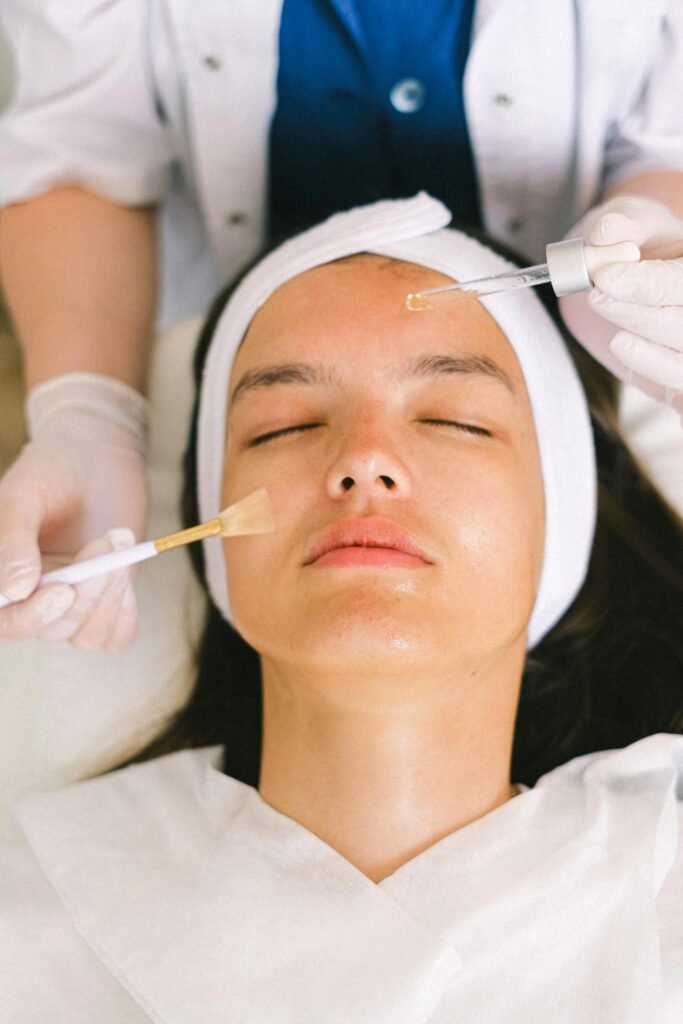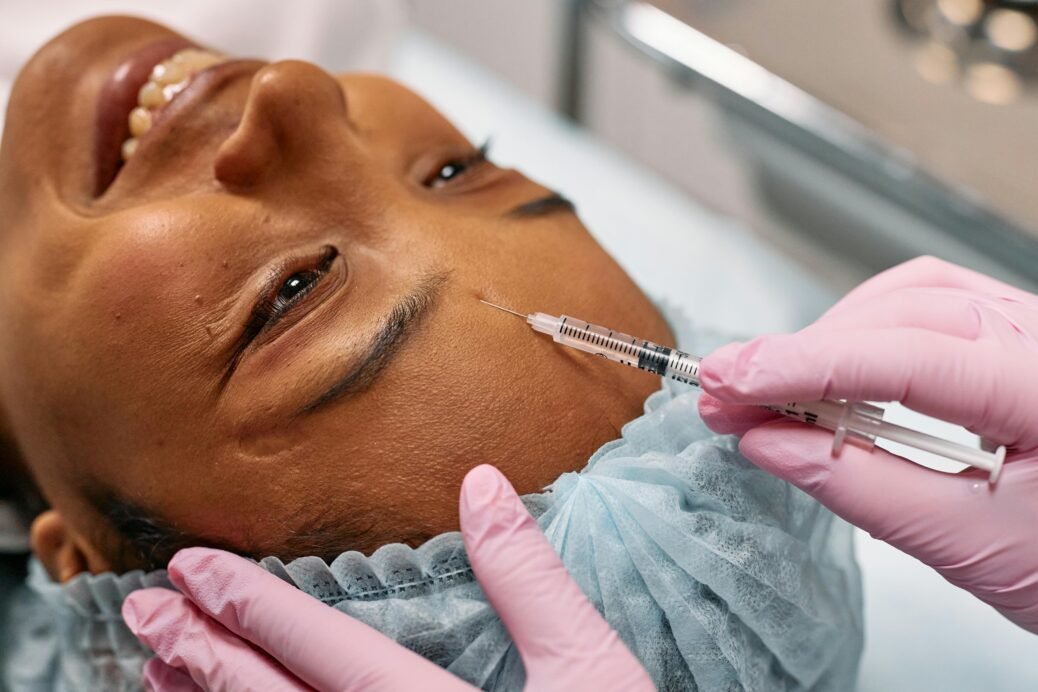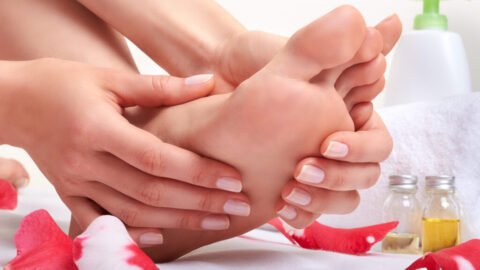How to Do Lip Fillers Without Being a Nurse: Navigating Aesthetics Cosmetology Licensing
Lip fillers have become a popular cosmetic procedure for enhancing the volume and shape of lips, but there’s a common misconception that only nurses or medical professionals can perform such treatments. In reality, various pathways and licenses are available for non-nurse individuals who wish to enter the field of aesthetic cosmetology. Pursuing an aesthetics cosmetology license allows individuals to administer lip fillers and other non-surgical cosmetic procedures under certain regulations.
The requirements for practicing aesthetic procedures without a nursing background vary by region, often entailing a combination of specialized training, certification, and adherence to legal guidelines. Interested practitioners typically need to attend courses focused on cosmetic injection techniques, gain hands-on experience, and understand the anatomical considerations pertinent to administering dermal fillers. These educational components are crucial to ensure safe and effective treatments for clients seeking aesthetic enhancements.
Securing the right credentials involves comprehensive training in aesthetics, including a deep dive into hyaluronic acid-based fillers, their application, potential risks, and post-treatment care. While registered nurses and other medical professionals can bring their background to the field, non-medical professionals are also able to acquire the necessary skills and certification to become proficient lip injectors, provided they meet their local regulations and complete the required education.
Understanding Aesthetics and Cosmetology Licensing

Before performing any aesthetic procedures, including lip fillers, it’s crucial to understand the regulatory landscape. Licensing ensures the safety and competency of practitioners, and unlicensed practice has legal consequences.
Licensing Requirements for Aesthetic Procedures
Licensing requirements vary by region, but generally, practitioners need to complete specific training and education. For instance, in Washington State, individuals seeking a cosmetology license must meet the stipulated education requirements and be at least 17 years old.
Role of a Nurse in Cosmetology
A nurse may perform aesthetic procedures within their scope of practice, as long as they possess the requisite cosmetic nurse training. Nurses typically have advanced knowledge of medical procedures, which can be beneficial for patients seeking aesthetic treatments.
Legal Implications of Unlicensed Practice
Practicing without a license is illegal and subject to severe penalties, including fines and potential imprisonment. For safety and legality, anyone considering providing lip filler services must obtain the appropriate licensure.
Overview of Lip Filler Procedures
Lip filler procedures have become a sought-after cosmetic treatment for enhancing lip volume and shape. Expertise in various injection techniques and knowledge of filler materials are key components for achieving desired results.
Types of Lip Fillers
There are several types of lip fillers available, each with unique properties and longevity. The most commonly used fillers are those based on Hyaluronic Acid (HA), a substance naturally found in the body that provides temporary results ranging from six months to a year. Brands like Juvederm and Restylane offer formulations specifically designed for the lips. Other types, such as Calcium Hydroxylapatite (CaHA) and Poly-L-lactic Acid (PLLA), are less common for lips due to their consistency and longevity.
Benefits and Risks of Lip Fillers
Lip fillers offer a range of benefits, including increased volume, improved symmetry, and refinement of the lip shape. Patients may also see a reduction in lines around the mouth and enhanced hydration of the lips. However, these procedures also come with risks such as swelling, bruising, and, in rare cases, more serious complications like vascular occlusion. It’s crucial for practitioners to be well-versed in anatomy and injection techniques to mitigate these risks.
Non-Invasive Lip Enhancement Alternatives

For those seeking fuller lips without the use of injectables, several non-invasive alternatives have gained popularity. These methods can provide plumping effects without the need for a medical professional to administer treatments.
Hyaluronic Acid Serums
Hyaluronic acid serums are a topical solution for those seeking a subtle enhancement of the lips. When applied to the lips, hyaluronic acid attracts moisture, creating the appearance of fuller lips. Natural Lip Fillers: Popular Needle-Free Alternatives for 2024 highlights serums that can hydrate and plump without the use of needles.
Lip Plumping Devices
Lip plumping devices, such as suction pumps, work by temporarily increasing blood flow to the lips, resulting in a plumper look. It is important to use these tools as directed to avoid adverse effects. DIY Lip Fillers: At-Home Options, Risks, and Alternatives discusses potential risks and underscores the importance of following appropriate guidelines to prevent complications.
Safety and Hygiene in Aesthetic Treatments
Ensuring safety and hygiene in aesthetic treatments, such as lip fillers, is critical. Strict adherence to sanitation standards and infection control protocols is essential to protect both the practitioner and the client.
Sanitation Standards
Sanitation involves the proper cleaning and disinfection of equipment and surfaces. In the context of aesthetic treatments:
Workstations: They must be wiped down with an EPA-registered disinfectant before and after each client.
Tools: Non-disposable instruments should undergo a three-step process: cleaning, disinfection, and sterilization. For single-use items, proper disposal in biohazard containers is mandatory immediately after use.
Infection Control Protocols
Infection control protocols are designed to prevent the transmission of infectious diseases. Key elements include:
Hand Hygiene: Practitioners must wash their hands with soap and water or use an alcohol-based hand sanitizer before and after contact with each client.
Gloves: Disposable gloves should be worn during the treatment and changed between clients or if they become contaminated.
Needle Safety: Aspirate before injection to avoid intravascular filler placement and use sharps containers for needle disposal.
By maintaining rigorous standards for safety and hygiene, aesthetic treatments can be performed with a high degree of confidence in the prevention of complications and infections.
Client Consultation and Assessment
The initial step in the lip filler process is a thorough client consultation and assessment to ensure safety and align the procedure with the individual’s aesthetic goals.
Evaluating Client Suitability
In evaluating client suitability, the aesthetician should review the client’s medical history and conduct a physical examination of the lips. Medical history is essential to identify any contraindications, such as allergies to filler materials or autoimmune diseases that may affect healing. A physical examination includes assessing the lips’ structure, symmetry, and any existing asymmetries or unique features that should be considered during the filler application.
Medical History
Allergies
Medications
Past Surgeries
Autoimmune Conditions
Physical Examination
Lip Structure
Symmetry
Unique Features
Discussing Expectations and Concerns
The aesthetician must discuss the client’s expectations and address any concerns they may have regarding lip filler treatments. The discussion should focus on realistic outcomes and the nature of results, which are temporary and may require maintenance. It’s important for clients to articulate what they hope to achieve with fillers—whether it’s enhancing lip volume, shape, or symmetry.
Expectations
Desired Outcome
Volume
Shape
Symmetry
Concerns
Potential Risks
Post-Treatment Care
Longevity of Results
It is during this stage that clear communication is established, laying down the foundation for a successful lip filler treatment.
Post-Treatment Care and Management
After the administration of lip fillers, meticulous post-treatment care is crucial to ensure the longevity of the results and to minimize risks. Proper management can prevent complications and promote a swift recovery.
Post-Procedural Guidelines
Ice Application: Patients should apply ice to their lips intermittently for the first 24 hours to reduce swelling.
Avoid Certain Activities: Within the initial 48 hours, patients need to steer clear of any strenuous exercise or high temperatures, such as saunas or tanning beds.
Product Use: One should wait at least 24 hours before applying lipstick or lip balms to avoid irritation or infection.
Handling Complications
Swelling and Bruising: Common side effects include swelling and bruising, which typically subside within a few days. Utilizing arnica cream may aid in the reduction of bruising.
Irregularities: If a patient notices lumps or asymmetry as the swelling decreases, massaging the area gently can help. If such irregularities persist, a follow-up with the practitioner is advised.
Infection Signs: Signs of infection such as increasing pain, pus, or spreading redness require immediate medical attention.
Ethics in Aesthetic Practice
Ethical considerations in aesthetic practice are critical to ensuring patient safety and maintaining professional integrity. Adherence to ethical guidelines not only protects the clients but also enhances the credibility of the practice.
Informed Consent Process
Informed consent is a cornerstone of any medical or aesthetic procedure. Clients should be provided with all relevant information regarding lip filler procedures, including benefits, risks, alternatives, and the possibility of adverse outcomes. The information should be conveyed clearly and in a manner that the client can understand. The process involves more than just signing a consent form; it’s about ensuring the client has a full understanding of the treatment they will receive.
Client Confidentiality
Client confidentiality is another integral aspect of ethical aesthetic practice. Professionals must protect the personal and medical information of their clients. Information should be shared only with those who are directly involved in the client’s care and only with the client’s permission, unless mandated by law. Keeping client data secure and private reinforces trust and respects the client’s privacy.
Advancements in Aesthetic Treatments
The landscape of aesthetic medicine is consistently evolving with significant strides in treatment methods and patient care. These advancements pave the way for more effective and accessible non-surgical options, as well as revolutionary trends shaping the future of aesthetic practices.
Innovations in Non-Surgical Procedures
The availability of non-surgical procedures for aesthetic purposes has expanded, allowing individuals to enhance their appearance with minimal downtime. Hyaluronic acid fillers, for example, have advanced to offer more natural and long-lasting results in lip augmentation. Techniques have become more refined, with a focus on creating balance and symmetry in accordance with the golden ratio, as suggested by industry research.
Emerging devices in the non-surgical arena, like the hyaluron pens, represent a growing interest in alternative delivery methods for dermal fillers. Although these products are gaining popularity, it’s crucial to acknowledge the FDA’s stance as they are not approved and come with potential risks.
Emerging Trends in Aesthetic Medicine
Patient-customized treatments are at the forefront of emerging trends. Practitioners now have the ability to tailor procedures to the unique anatomical features and desired outcomes of each patient, significantly enhancing both the experience and the results.
The aesthetics industry is also seeing a shift toward a holistic approach that emphasizes natural-looking enhancements. This is evident in the development of new products and techniques that prioritize subtlety and maintenance of the patient’s innate features, signaling a move away from one-size-fits-all solutions.

Career Paths in Aesthetic Cosmetology
Aesthetic cosmetology offers a variety of career paths for individuals interested not only in beauty, but also in the health and care of the skin. This field is broad, encompassing numerous specializations and requiring ongoing education to stay current with industry advancements and techniques.
Specializations in Aesthetic Practices
The specializations within aesthetic cosmetology include but are not limited to:
Skin Care Specialists: They focus on facial skin care treatments and may also provide body treatments.
Makeup Artists: Specialists in makeup application, often working in salons, spas, or the entertainment industry.
Laser Technicians: They operate laser equipment to perform hair removal, skin treatments, or tattoo removal.
These roles may require specific state licensure or certifications, and it’s important for practitioners to verify their local regulations.
Continuing Education and Training
Continuing education is essential in aesthetic cosmetology due to ever-evolving techniques and technologies. Practitioners can enhance their skills and knowledge through:
Workshops and Seminars: Short-term learning opportunities focusing on specific skills or products.
Certification Courses: These courses cover a range of techniques and are often required for operating advanced equipment or offering certain services.
For example, courses are available to teach the latest cosmetic injection techniques. Such education not only hones a practitioner’s skillset but can also expand their service offerings and marketability.








